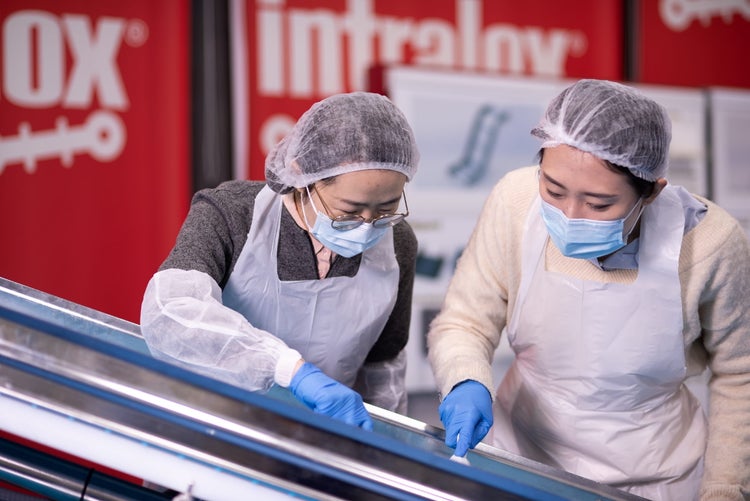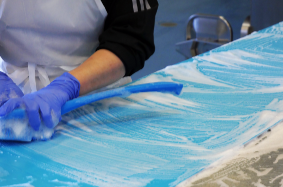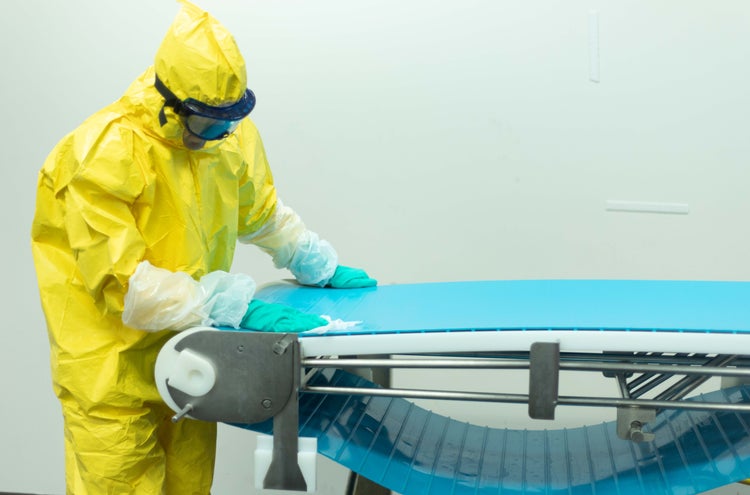What You Need to Know When Considering a Clean In Place System

A Clean In Place (CIP) system is often chosen to automate certain parts of the sanitation process. In some instances, such as large silos or long pipelines, the production equipment design leaves you no other choice than CIP for cleaning. In other instances, a CIP system is installed as a means to reduce cleaning time or labor costs. In recent years, CIP systems have been used more and more creatively in conveyors, spiral freezers, filling machines, and even dust collection systems. CIP systems can be simple or very complex, and are great tools with many opportunities:
- Design
- Technical Skills and Training
- Verification/Validation
- Documentation
Design
How well a CIP system works, how much it costs to install, and future CIP system operational costs are all determined by how well it is designed and programmed.
One of the greatest design opportunities is the CIP system supply tank.
The more automated and fail-proof a CIP system is designed, the more it will cost to install; however, it will reduce operation costs over time with fewer food safety issues and a lower environmental impact.
Adequate utility systems are critical to CIP operations. CIP systems require adequate on-demand water and steam supply without hindering water supply for other plant needs during operation.
Designing a CIP system to accomplish the cleaning objective is critical to success. CIP systems are often closed, so you won’t know if the equipment is clean until the system completes the circuit and an inspection can be done. Even then, based on production equipment design, there may be very limited access points for inspection. While one area inspected may be clean, other areas may not be and may cause food safety issues.
One of the greatest design opportunities is the CIP system supply tank. Very often, size and number of supply tanks are chosen based on potential location versus what the business requires to be as efficient as possible. For example, if there is only room for one supply tank, only one is installed even though it may be more efficient and environmentally-friendly to install three tanks: one tank for re-claiming wash and final rinses to be used for pre-rinses, one tank for washing and recapturing at least part of the wash solution at the end of the cycle, and one tank for potable final rinses with no return feature.
Technical Skills and Training
The right technical skills are extremely important for the engineering, programming, and operation of a CIP system.
As stated above, engineers need to understand the objectives of equipment/system they are designing. Only this will ensure that the correct components are chosen and properly sized for the equipment and soil type to be cleaned. Components may include supply and return pumps, filters, air and check valves, probes, and sensors. Engineers need the correct technical skills to know which components are needed, and how they work together in the system as a whole. To effectively do that, they require a good understanding of all steps in an optimum cleaning program; taking into account not only system capabilities and equipment, but also the soil type to be cleaned.
Programmers need to program the system so that all components work together to ensure the CIP system operates as intended. Programmers must understand which components of the CIP system have to be on or off, when, and for how long. They need to recognize when to alarm the system or shut the system down. Programmers also have the task of designing a Human Machine Interface (HMI) that operators will be able to understand and use.
The importance of the operator’s role is very often underestimated; his/her knowledge of operation as well as system verification and validation is critical to ensure safe food production.
Last but definitely not least, the CIP system operator—the end user—requires the appropriate training and skill set to enable the correct use and successful execution of CIP system operation. The operator needs to know how to correctly troubleshoot system issues/alarms when they occur. Unfortunately, operators too often receive very little training and understand only when to push a start button. Many CIP system failure investigations determine that CIP system operators often lack the appropriate skill set to really understand how the CIP system works and/or what to do when the system tells them there is an alarm. The importance of the operator’s role is very often underestimated; his/her knowledge of operation as well as system verification and validation is critical to ensure safe food production.
Verification/Validation
Verification proves that the CIP system operated as intended and all target set points were met during the circuit operation: time, temperature, chemical concentration, and flow (mechanical action). Verification methods vary based on the CIP system programming. A highly-automated CIP system continuously monitors during operation, and alarms and stops the system clock when any of the critical set points are lost. It does not resume the clock until set points are again met.
Verification activities may also include testing the final rinse water for ATP, APC or allergen tests, or by taking micro/allergen swabs, testing of the chemical concentration, temperature verification, and flow rate.
CIP system program audits are another form of verification. They compare the original program, often called a pinning chart, to the actual operation to ensure that the actual program in use is documented correctly and that any program changes are captured.
Validation is very simply the process of validating clean. It needs to be performed once the system is installed and at periodic intervals. The validation steps typically include:
- Calibration of the temperature probes, conductivity probes, and other sensors.
- Verification that the system is functioning as intended; for example valves are opening/closing, cycle times are met, alarms are functioning, chemical concentration and temperatures are met, etc.
- Opening of the circuits after cleaning for visual observations and microbiological/allergen monitoring of specific equipment swab sites, and/or final rinse sample testing.
Documentation
Some automated systems can even print a chart at the end of the circuit operation, which serves as documentation of the process. System documentation is a legal regulatory requirement and must be done manually if the system does not have the capabilities. Some programming can even provide a daily CIP system report that captures all circuit information, faults/alarms, and any changes input into the system on that date.
Summary
CIP systems exist in various shapes and forms, and are very useful tools for both sanitation effectiveness and efficiency. CIP systems can reduce sanitation labor costs for the business, but only if they are designed and programmed correctly. Food safety and cleaning objectives should drive CIP design, programming, and operation. CIP system design, programming, and training are critical to effective operation that supports food safety and environmental sustainability.
The success of any assisted cleaning system is contingent on integrating a sound sanitation program alongside proper hygienic design. Both Intralox and Commercial Food Sanitation—an Intralox company—help achieve this with our CIP offerings.



